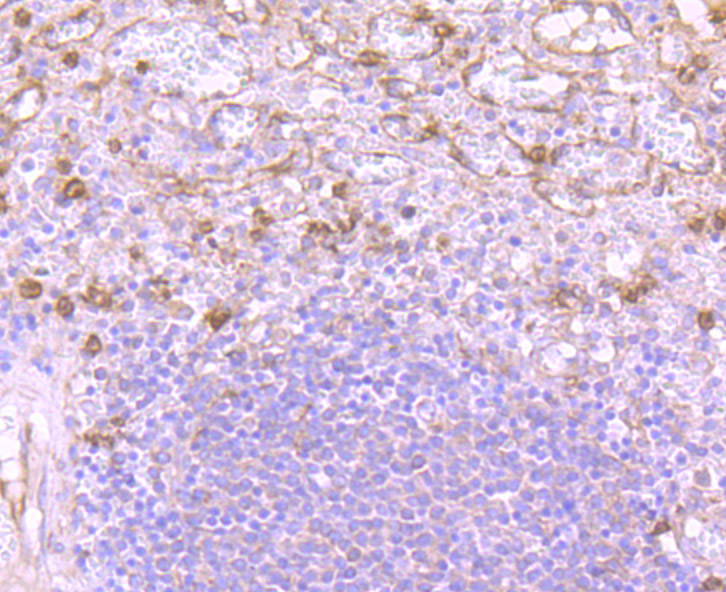Product Detail
Product NameVersican Rabbit mAb
Clone No.JB42-32
Host SpeciesRecombinant Rabbit
Clonality Monoclonal
PurificationProA affinity purified
ApplicationsIHC,WB
Species ReactivityHu, Ms
Immunogen DescRecombinant protein
ConjugateUnconjugated
Other NamesChondroitin sulfate proteoglycan 2 antibody
Chondroitin sulfate proteoglycan core protein 2 antibody
Chondroitin sulfate proteoglycan core protein, cartilage antibody
CSPG2 antibody
CSPG2_HUMAN antibody
ERVR antibody
GHAP antibody
Glial hyaluronate binding protein antibody
Glial hyaluronate-binding protein antibody
Large fibroblast proteoglycan antibody
PG-M antibody
PGM antibody
VCAN antibody
Versican antibody
Versican core protein antibody
Versican proteoglycan antibody
WGN 1 antibody
WGN antibody
WGN1 antibody
Accession NoSwiss-Prot#:P13611
Uniprot
P13611
Gene ID
1462;
Calculated MW373/265/182/74 kDa
Formulation1*TBS (pH7.4), 1%BSA, 40%Glycerol. Preservative: 0.05% Sodium Azide.
StorageStore at -20˚C
Application Details
IHC: 1:50-1:200
Immunohistochemical analysis of paraffin-embedded human spleen tissue using anti-Versican antibody. Counter stained with hematoxylin.
Immunohistochemical analysis of paraffin-embedded mouse brain tissue using anti-Versican antibody. Counter stained with hematoxylin.
Versican (chondroitin sulfate proteoglycan 2) is a large extracellular matrix proteoglycan involved in cell growth and differentiation. Important as a structural molecule, versican creates loose and hydrated matrices during key events in development and disease. The protein contains hyaluronic acid and glycosminoglycan-binding domains, epidermal growth factor-like repeats, a lectin-like sequence and a complement regulatory protein-like domain. Splice variants differ greatly in length and degree of modification by glycosaminoglycan chains. Accumulation around smooth muscle cells in lesions of atherosclerosis, suggests a role for versican in atherogenesis. Versican, differentially expressed in human melanoma, plays a role in tumor development and may be a reliable marker for clinical diagnosis. The organization of HA- and versican-rich pericellular matrices may faciliatate migration and mitosis by diminishing cell surface adhesivity and affecting cell shape through steric exclusion and the viscous properties of HA proteoglycan gels. The human verisican gene maps to chromosome 5q14.3.
If you have published an article using product 49792, please notify us so that we can cite your literature.
et al,Single-cell analysis reveals the immune heterogeneity and interactions in lungs undergoing hepatic ischemia-reperfusionInInt ImmunopharmacolOn2023 NovbyChen Zhang1,Mingwei Sheng2, et al..PMID:37844464
, (2023),
PMID:
37844464
et al,Comprehensive integration of single-cell RNA and transcriptome RNA sequencing to establish a pyroptosis-related signature for improving prognostic prediction of gastric cancer
, (2024),
PMID:




 Yes
Yes



